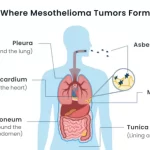
Bioinformatics glossary- G
November 9, 2018A | B | C | D | E | F | G | H | I | J | K | L | M | N | O | P | Q | R | S | T | U | V | W | X | Y | Z
Bioinformatics glossary- G

Gaps (affine gaps)
A gap is defined as any maximal, consecutive run of spaces in a single string of a given alignment. Gaps help create alignments that better conform to underlying biological models and more closely fit patterns that one expects to find in meaningful alignment. The idea is to take in account the number of continuous gaps and not only the number of spaces when calculating an alignment. Affine gaps contain a component for gap insertion and a component for gap extension, where the extension penalty is usually much lower than the insertion penalty. This mimics biological reality as multiple gaps would imply multiple mutations, but a single mutation can lead to a long gap quite easily.
Gap penalties
The penalty applied to a similarity score for the introduction of an insertion or deletion gap, the extension of a gap, or both. Gap penalties are usually subtracted from a cumulative score being determined for the comparison of two or more sequences via an optimization algorithm that attempts to maximize that score.
Gel electrophoresis
A technique by which molecules are separated by size or charge by passing them through a gel under the influence of an external electric field.
Gene Index
A listing of the number, type, label and sequence of all the genes identified within the genome of a given organism. Gene indices are usually created by assembling overlapping EST sequences into clusters, and then determining if each cluster corresponds to a unique gene. Methods by which a cluster can be identified as representing a unique gene include identification of long open reading frames (ORFs), comparison to genomic sequence, and detection of SNPs or other features in the cluster that are known to exist in the gene.
Data bank of genetic sequences operated by a division of the National Institutes of Health.
Gene
Classically, a unit of inheritance. In practice, a gene is a segment of DNA on a chromosome that encodes a protein and all the regulatory sequences (promoter) required to control expression of that protein.
Gene chips (also Gene arrays)
The covalent attachment of oligonucleotides or cDNA directly onto a small glass or silicon chip in organized arrays. Over 50,000 different DNA fragments can be presented on a single chip providing a high throughput parallel method of probing gene expression, genotype or gene function.
Gene expression
The conversion of information from gene to protein via transcription and translation.
Gene families
Subsets of genes containing homologous sequences which usually correlate with a common function.
Gene library
A collection of cloned DNA fragments created by restriction endonuclease digestion that represent part or all of an organism’s genome.
Gene product
The product, either RNA or protein, that results from expression of a gene. The amount of gene product reflects the activity of the gene.
The use of genetic material for therapeutic purposes. The therapeutic gene is typically delivered using recombinant virus or liposome based delivery systems.
The mapping of all possible codons into the 20 amino acids including the start and stop codons.
Genetic engineering (Recombinant DNA technology)
The procedures used to isolate, splice and manipulate DNA outside the cell. Genetic Engineering allows a recombinantly engineered DNA segment to be introduced into a foreign cell or organism, and be able to replicate and function normally.
Genetic marker
Any gene that can be readily recognized by its phenotypic effect, and which can be used as a marker for a cell, chromosome, or individual carrying that gene. Also, any detectable polymorphism used to identify a specific gene.
Genome
The complete genetic content of an organism.
Genomic DNA (sequence)
DNA sequence typically obtained from mammalian or other higher-order species, which includes both intron and exon sequence (coding sequence), as well as non-coding regulatory sequences such as promoter, and enhancer sequences.
The analysis of the entire genome of a chosen organism.
Genotype
Strictly, all of the genes possessed by an individual. In practice, the particular alleles present in a specific genetic locus.
The addition of carbohydrate groups (sugars) e.g. to polypeptide chains
Guanine (G)
One of the nitrogenous purine bases found in DNA and RNA
















